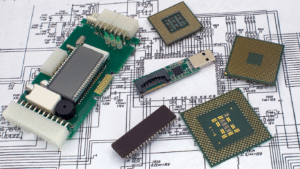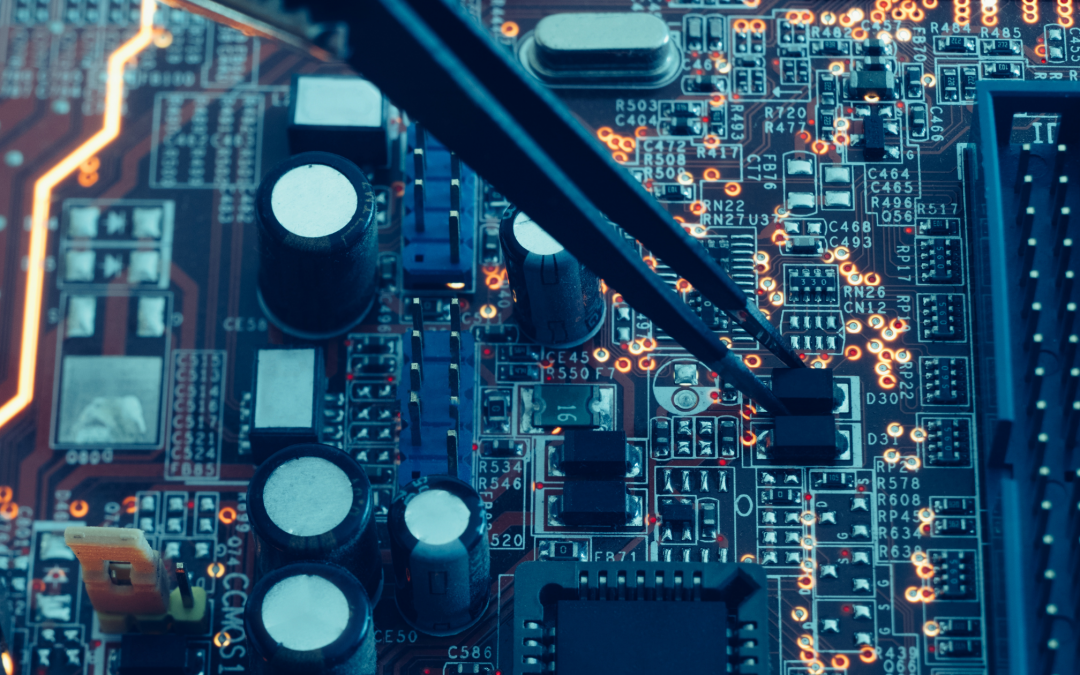The history of circuit boards is a fascinating journey through time, technology, and innovation. What began as a rudimentary method for connecting electrical circuits has evolved into a highly precise, miniaturized process that powers nearly every modern electronic device. At Nova Engineering, we specialize in high-quality PCB assembly in Denver, Colorado, and we take pride in the legacy that brought us to where we are today.
The Early Days: The First Concept of a Circuit Board
The history of circuit boards begins in the early 20th century with Albert Hanson, a German inventor who, in 1903, filed a patent for a method of constructing flat, layered circuits. While rudimentary, this early invention laid the groundwork for what we recognize today as the printed circuit board (PCB). Hanson’s design included conductive foil paths mounted to insulating boards, a clear precursor to today’s multi-layered systems.
In 1927, American inventor Charles Ducas advanced this idea by printing conductive paths directly onto a flat wooden board using stencil and conductive ink. His creation marked the first true “printed” circuit board and introduced the concept of streamlined electrical connectivity without bulky wires.
Paul Eisler and the Modern PCB
While many contributed to the development of PCBs, Paul Eisler is widely credited with inventing the modern version. In the 1930s and 1940s, Eisler applied his knowledge of printing to electronic circuits while working in England. His innovation, printing conductive traces onto a board rather than hand-soldering wires, revolutionized electronic manufacturing. His technology was first used in British military radios during World War II.
By 1943, more advanced methods of etching circuits onto copper emerged. These early circuit boards were printed onto glass-reinforced, non-conductive substrates—a technique that gained public exposure in 1948 when the U.S. military released the technology for commercial use. This milestone marked a new era in the history of circuit boards and paved the way for mass production.
The Age of Transistors and Miniaturization
 The 1950s brought a major shift in the history of circuit boards with the advent of transistors. Unlike vacuum tubes, transistors were small, reliable, and efficient. This innovation allowed PCBs to shrink in size while increasing in complexity and reliability. Electronics could now be manufactured for home use, enabling the rise of consumer electronics.
The 1950s brought a major shift in the history of circuit boards with the advent of transistors. Unlike vacuum tubes, transistors were small, reliable, and efficient. This innovation allowed PCBs to shrink in size while increasing in complexity and reliability. Electronics could now be manufactured for home use, enabling the rise of consumer electronics.
During the 1960s, double-sided circuit boards became common. One side held identification printing and the other housed electronic components. This further improved layout efficiency and performance.
Surface Mount Technology (SMT) and the Rise of Automation
One of the most important developments in the history of circuit boards came in the 1980s with the introduction of Surface Mount Technology (SMT). SMT allowed components to be mounted directly onto the surface of the board, removing the need for drilling holes as in traditional through-hole technology. This reduced assembly time, improved reliability, and enabled further miniaturization.
At Nova Engineering, our PCB assembly process includes both surface mount and through-hole technologies, depending on the specific needs of your design. Our experienced team has been at the forefront of innovation for over 35 years, and we’re proud to continue pushing the boundaries of what PCBs can do.
The Modern Era of PCB Assembly
Today, PCBs are incredibly advanced. They often include multiple layers, solder masks, silkscreens, and precision-machined traces. Materials such as fiberglass, copper, and gold plating are commonly used. Whether it’s in smartphones, medical devices, or aerospace systems, modern PCBs are the silent workhorses behind the world’s most sophisticated technology.
With the rapid growth of Internet of Things (IoT), artificial intelligence (AI), and wearable devices, the history of circuit boards is still being written. PCB design and assembly must now meet increasingly complex demands, including ultra-compact designs, high-speed data transmission, and energy efficiency.
Nova Engineering: Proud to Build the Future
At Nova Engineering, we honor the history of circuit boards by delivering exceptional service in PCB assembly, including turnkey, consigned, and partially consigned builds. With three fully equipped production lines and a dedicated prototype line, we welcome projects of all sizes and complexities.
We’ve partnered with customers for over three decades to build the technology they’re passionate about. Our strong vendor relationships and expert team ensure competitive pricing and unmatched quality.
If you’re ready to bring your next PCB project to life, contact Nova Engineering today to request a quote.


Recent Comments